Asia’s beauty traditions have been passed down for generations and generations. Of course, as a skincare brand founded by two Korean American women, we’re influenced by our cultural beauty traditions. After all, we are incredibly proud of our roots. Today, in honor of Asian American and Pacific Islander (AAPI) Heritage Month, we’ll be highlighting some beauty rituals that come from all various parts of Asia — courtesy of six AAPI women who were exposed to, and taught, these long-standing cultural traditions from a young age. Without further ado: Keep scrolling to learn more about different beauty customs across Asia.
Priyanka Ganjoo, Founder of Kulfi Beauty

Instagram: @priyankaganjoo
Background: South Asian
“Wearing kajal eyeliner is so embedded in my South Asian heritage that often it’s not even considered makeup. Our launch campaign, Nazar No More, was inspired by a tradition in my culture associated with kajal eyeliners. Traditionally kajal eyeliner is worn to deflect Nazar, or Evil Eye. Often, babies are dotted with kajal when they are born as a symbol of love, care, and protection.
With Kulfi, we want to use kajal eyeliners as a way to express ourselves and free ourselves from the Eurocentric patriarchal gaze that has defined beauty for us for so long. I now use the generations of beauty traditions I carry with me loudly and proudly as a source of empowerment and as a way to celebrate my uniqueness. Playing with color, glitter, pearls, and shapes paired with our kajals connects me with many happy, carefree memories.”
Savannah Soven, Esthetician based in Ocean City, California

Instagram: @nevoskin
Background: Cambodian
“As a way to ‘scrape away sickness,’ my Cambodian grandmother uses coining as a method to restore the body to good health. Coining involves rubbing the skin vigorously with a metal coin, producing red marks and bruising. While this practice can be painful, it is meant to help increase blood circulation, which helps to reduce feelings of illness, relieve pain, and promote an overall feeling of well-being. Now I incorporate facial massage into my skincare routine for similar reasons — to increase facial blood flow, alleviate stress and facial tension, and boost happy hormones in the process!”
Ivy Diec, Content creator based in Toronto, Canada

Instagram: @ivydbeauty
Background: Chinese- and Vietnamese-Canadian
“Growing up, my parents would always stress the importance of a healthy balance in life, specifically when it comes to your body. Traditional Chinese Medicine has taught me that the body must maintain a balance of heating and cooling elements in order to be healthy. This relates directly to food and the body, especially specific ingredients in skincare! There are many herbs that support healthy skin from the inside and out, with many popular ingredients in skincare based in Traditional Chinese Medicine. This has taught me to listen to and observe my skin and what it needs, in order to maintain a healthy and balanced skin barrier!”
Helen Cai, Freelance creator based in Canada

Instagram: @skinbyhelen
Background: Chinese
“I learned from a very young age that Traditional Chinese medicine and cooking is the key to healthy, youthful, and glowing skin. My mom and grandma would make a traditional dessert soup with dried snow fungus, red dates, goji berries, lotus seeds, and longan. It is not only rich in collagen, which is great for your joints and skin, but it is also great for your overall health.”
Dani Walsh, Grad student based in London

Instagram: @daniwalsh
Background: Chinese-American
“My mom grew up in Xi’an in the late 60s and at that time, expressions of femine beauty and self-beautification were largely discouraged in China. It wasn’t really until the late 70s that the country began implementing policies to move the economy to one that was more market-driven, which of course meant capitalism and commodifying things like female beauty. I don’t think it was until my mom met my dad — who’s American — in the 80s that she started to own makeup. But my mom’s skin is the one thing she has always been religious about. Even today, she still has the best skin out of anyone I know! She’s also a big advocate of using the pulp from fresh aloe leaves to moisturize, and will always use a thick body cream right out of the shower. I don’t go a day without moisturizing my body head-to-toe because of her — it’s a ritual and an addiction.”
Kristiana Cuevas, Digital creator based in California

Instagram: @simplyhappyskin
Background: Filipino-American
“I grew up in a Filipino-American household and learned about beauty traditions that are well-known in my culture. One is to use an umbrella when you go out in the sun. Many Filipinos use an umbrella to avoid sun and heat exposure on their skin — you can find many people using an umbrella in the Philippines during the day. It’s common to hear Filipinos say to avoid the sun, which, by the way, is also linked to the problem of colorism in the Philippines — but overall avoiding the sun is good skin advice.
Another one is don’t sleep with your hair wet, because it will make you go blind. This is a common Filipino superstition but it does relate to maintaining healthy hair. When our hair is wet, it’s at its most vulnerable and can be easily damaged. So if one sleeps with their hair wet, the friction between a pillow and wet hair can potentially damage hair.
Lastly: Natural products can help you. Using coconut oil to nourish hair and using aloe vera and papaya on skin are also common beauty practices in Filipino culture. The Philippines is a developing country and many people are poor, so many Filipinos grew up learning that natural beauty remedies can be helpful because those were accessible to them.”
Leanna Phan, Makeup artist based in Elk Grove, California

Instagram: @leanna.phan
Background: Vietnamese
“My family would wear a lot of silk as pajamas. Not only were they cooling in the hot climate of Vietnam, but silk also has antibacterial properties. Now I sleep with silk pillowcases at night to prevent any acne from forming. Also, lightly slapping products into your face is something I learned from my mom. Going in an upward flicking motion with your fingers helps stimulate the skin as well as absorb product. This technique can help with face shaping and reduce puffiness.”
Read more about AAPI heritage in beauty:
Sorry, we couldn't find any posts. Please try a different search.
RELATED













No comments found